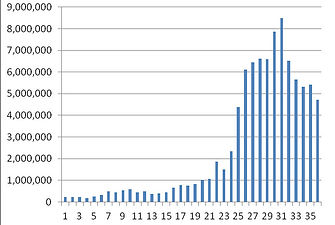_pn.png)
_pn.png)

Case Study:
Allen Digital Marketing Platform
Project: Automated "Push" Banners
Industry:
Sports Equipment
Manufacturing / eCommerce
Date: 2018-2020
In 2018, Allen Brothers integrated its eCommerce website with its operational systems, allowing its customers to access the company’s full retail range of 3,500 SKUs on-line. However, along with opportunities came risks.
Opportunity
Allen Brothers has been manufacturing sailing hardware at its Essex, UK, factory since the early 1960s. The business is a supplier to small sailboat builders and users from club and leisure sailors to Olympic champions. Originally constituted as a traditional B2B supplier to the industry, the company made the decision to build an eCommerce web site in 2016 and started selling a proportion of its products direct to the public on-line.
Until December 2017, this represented only a fraction of Allen’s range, but in that month, with agreement from its international distributors, the company increased the range on offer and integrated its eCommerce with its operational systems, to offer access to real time inventory. This meant customers no longer had to call to see whether a product was in stock, but allowed them to see the status at a glance and decide whether to place an order on-line or call the sales line and make the order on their account.
Screen Matrix took the opportunity to introduce a sophisticated search function, which allowed users to select the best product for their needs by filtering selected criteria, including breaking load, line size and cost.
But, without a way of presenting the increased range to the consumer, the new range and functionality was unlikely to deliver the desired Return on Investment. Allen’s principal digital advertising partner is yachtsandyachting.com, so Jeremy Nicholson, CEO of Screen Matrix and Head of Marketing for Allen started discussing the ways in which the new digital information could drive impressions, conversions and revenue.
Method
Screen Matrix created a series of banner templates, each triggered from a piece of java code within yachts and yachting’ advertising banner carousel. Each call delivers a template banner populated with the product image, description and price, hyperlinked to the product information page on the ecommerce website.
By this method, 1,200 virtual banners can be created at a fraction of the cost of traditional artwork. However, there is no point in advertising product lines which are out of stock or too big or heavy for the usual courier service. So before the system fires over the product information, it selects the relevant product, “on the fly” according to stock levels, courier charges and settings controlled by the marketing department, allowing them to turn product lines on and off according to the campaign objectives.
Result
Following the introduction of the new digital web and banner marketing platform, from Financial Years 2018 to 2019, ecommerce revenue grew by an order of magnitude. Ecommerce revenue is now a significant revenue channel generating considerably higher margin than traditional distribution methods and allowing greater responsiveness to customer needs.
Conclusion
In addition to mining the data held within an organisation, the use of operational data to drive marketing automation delivers a solid business case. When business owners hear the phrase, “marketing automation” they automatically see complicated and costly systems heavy with the risk of cost and time overruns. By this simple use of data, Screen Matrix delivered a low cost, high return digital marketing platform which is already delivering positive ROI.
The effect on OTS over 36 months is
shown here:
Interestingly, the huge increase in OTS
enabled us to refine targeting from month
30 onward, increasing CTR and reducing
CPM, with consequent improvements
to revenue and campaign ROI.
